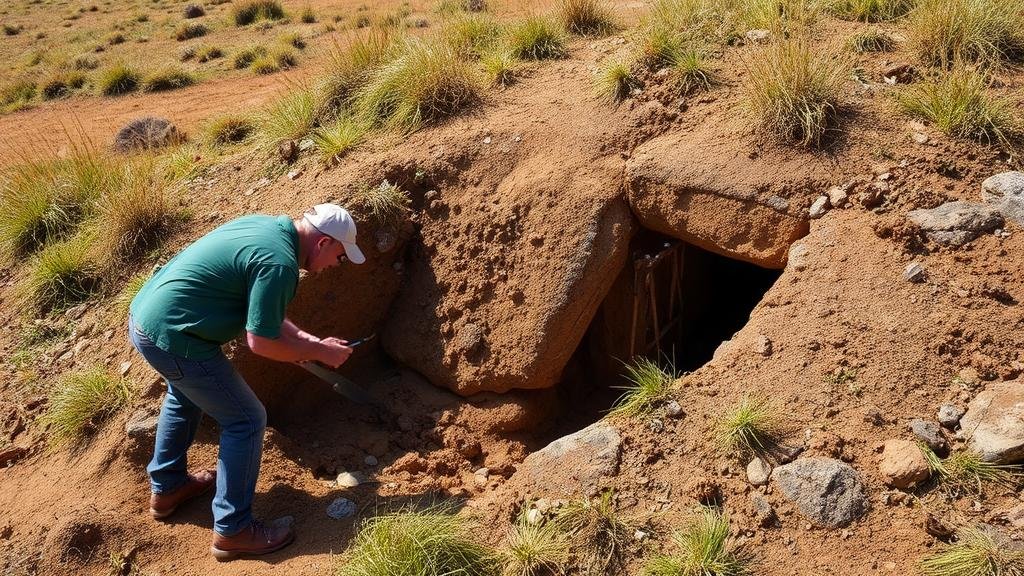The Secrets of Detecting in Ancient Burial Mounds and Tribal Sites
The Secrets of Detecting in Ancient Burial Mounds and Tribal Sites
The study of ancient burial mounds and tribal sites provides invaluable insights into past cultures, their rituals, and their interactions with the environment. This article will unveil the secrets of detecting and excavating these sites, highlighting methodologies, ethical considerations, and the wealth of information they can yield.
Understanding Burial Mounds and Tribal Sites
Burial mounds, also known as tumuli, are raised earth structures that have been used for millennia to honor and inter the deceased. These sites can be found across the globe, from the barrows of England to the Native American burial mounds in the United States. Similarly, tribal sites are locations utilized by ancestral groups for habitation, rituals, and other community activities.
For example, the Cahokia Mounds in Illinois, a UNESCO World Heritage Site, represent a complex pre-Columbian urban center, with large burial mounds that date back to 600 CE. Archaeologists study these mounds to learn about the societal structure, trade networks, and spiritual beliefs of the Mississippian culture.
Technologies and Techniques for Detecting
Detecting ancient burial mounds and tribal sites relies on various technological and methodological approaches that enhance archaeological exploration. This section details some of the most effective techniques.
- Ground-Penetrating Radar (GPR): This non-invasive geophysical method utilizes radar pulses to image the subsurface. GPR can identify anomalies beneath the earths surface, which may indicate the presence of burial sites.
- Magnetometry: By measuring the magnetic field variations in the soil, magnetometers can detect features like hearths or burial structures. For example, archaeological surveys at the Iron Age site of Oakington in England successfully used magnetometry to reveal previously unknown features.
- Soil Resistivity Surveying: This technique measures the soils electrical resistance, which can indicate human activity such as burial mounds. It has proven particularly effective at sites with disturbed soil.
Interpreting Findings
Once underground structures are identified, archaeologists carefully excavate these sites to uncover artifacts and skeletal remains which provide a narrative of the past. For example, the discovery of ornate grave goods in a burial mound may suggest the deceased’s social standing or cultural practices surrounding death.
Plus, isotopic analysis of skeletal remains can yield information about diet, mobility, and even migration patterns. A notable instance includes studies conducted on remains found in the Great Serpent Mound of Ohio, which indicated dietary diversity among its inhabitants.
Ethical Considerations
The excavation of burial mounds raises significant ethical issues regarding the treatment of human remains and cultural artifacts. Researchers must navigate the complex dynamics between academic inquiry and the respect owed to indigenous peoples and their ancestral sites.
For example, the Native American Graves Protection and Repatriation Act (NAGPRA) mandates the return of skeletal remains and cultural items to their respective tribes. Hence, archaeologists must work collaboratively with Native American groups to ensure that their research is conducted ethically and with consent.
Real-World Applications
Detecting and studying ancient burial mounds and tribal sites not only serves scholarly purposes but also contributes to contemporary cultural preservation. Research findings can help communities reconnect with their heritage and may influence modern land-use policies.
A case in point is the establishment of educational programs in conjunction with the National Park Service, where archaeological findings are integrated into community outreach efforts. These programs aim to foster dialogue about cultural identity among indigenous populations and promote the importance of archaeological stewardship.
Conclusion
Detecting ancient burial mounds and tribal sites is an intricate process that combines technology with archaeologys ethical responsibilities. knowledge gained from these sites not only enhances our understanding of historical cultures but also fosters a collaborative spirit among researchers and indigenous communities. To ensure responsible exploration, archaeologists must commit to ethical practices that prioritize cultural respect and foster ongoing dialogue between academia and the communities involved.
As we continue to uncover these secrets from our past, we invite the broader public to engage with archaeology not merely as passive consumers of historical knowledge but as active participants in a culturally rich narrative.



